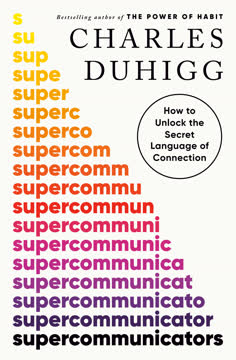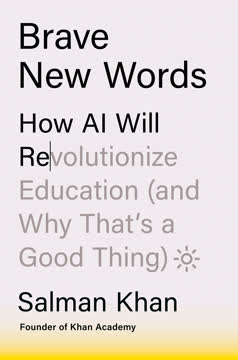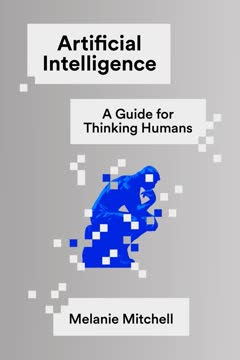重点摘要
1. 人工智能正在改变工作、学习与人类思维
如果说互联网改变了我们与知识的关系,那么人工智能将改变我们与思考的关系。
人工智能革命正在进行中。 人工智能正迅速重塑工作、教育和人类认知的各个方面。不同于以往主要影响体力劳动的技术革命,人工智能将颠覆法律、医学、教育等知识密集型行业。这不仅是自动化的问题,更是根本改变我们处理信息、解决问题和创造的方式。
影响广泛深远。 人工智能的影响超越了具体的工作职能:
- 改变了我们研究、写作和沟通的方式
- 改变了各领域的决策流程
- 引发了关于创造力、原创性和人类专业能力的思考
- 促使教育实践和学习成果的重新评估
2. 人工智能产出的是平均水平作品,推动人类卓越标准提升
人工智能是新的“中等水平”表现。独特但大多平庸。
重新定义标准。 人工智能持续产出稳定的平均质量作品,迫使各行业和教育领域重新校准绩效标准。这一变化带来重要影响:
- 曾被视为合格的人类表现如今可能显得不足
- 雇主和教育者必须提高对人类贡献的期望
- 批判性思维、创造力和情商等独有人类技能的价值日益凸显
对教育和工作的启示:
- 学生需超越人工智能水平,才能保持竞争力
- 任务和评估需重新设计,以考察更高阶的思维能力
- 职场期待员工创造超越人工智能产出的附加价值
3. 人工智能素养是未来各领域成功的关键能力
人工智能素养是一项重要的新技能。
普遍需求的人工智能能力。 随着人工智能无处不在,有效使用和理解人工智能工具的能力成为各学科的核心素养。此素养包括:
- 了解人工智能的能力与局限
- 掌握如何设计有效提示并解读人工智能输出
- 识别人工智能使用中的潜在偏见与伦理问题
- 能够批判性地评估人工智能生成内容
融入教育体系。 为迎接人工智能驱动的未来:
- 人工智能素养应贯穿各学科课程,而非仅限于计算机科学
- 学生需在多种情境中亲身体验人工智能工具
- 伦理考量与负责任使用人工智能应成为讨论重点
4. 人工智能时代需新策略维护学术诚信
检测仍有用处,但不能成为主要应对手段。
超越检测。 传统以检测作弊为核心的学术诚信方法,在人工智能时代效果减弱,亟需新策略:
- 强调原创思维和人类创造力的价值
- 设计既能利用人工智能又需独特人类输入的作业
- 关注过程与思维技能,而非仅仅结果
- 制定明确的人工智能使用规范
重新思考评估方式。 教育者需调整评价方法:
- 避免易被人工智能复制的任务
- 增加实时、现场的评估环节
- 采用展示学生成长与过程的作品集评估
- 推行同伴评审与协作项目,突出人际互动
5. 人工智能能提升创造力与解决问题的能力
人工智能将让我们更具创造力。
人工智能作为创造伙伴。 人工智能非但不会抑制人类创造力,反而有助于激发:
- 生成大量创意,突破人类思维瓶颈
- 发现意想不到的联系,激发新见解
- 无社会顾忌,促成更为非传统的想法
利用人工智能推动创新:
- 用人工智能进行头脑风暴,探索多样可能
- 将人工智能创意与人类判断和润色结合
- 利用人工智能快速可视化概念或制作原型
- 借助人工智能克服创作障碍,开拓新方向
6. 有效使用人工智能需明确提示与反复优化
“够好”标准在不断变化。
提示的艺术。 发挥人工智能最大潜力需掌握设计有效提示的技巧:
- 明确期望的输出、格式和背景
- 提供相关背景信息和限制条件
- 使用清晰、无歧义的语言
迭代过程。 获得最佳结果通常需要:
- 从宽泛提示开始,根据初步输出不断调整
- 通过追问澄清或扩展人工智能回答
- 综合多条输出,形成更完整内容
- 人工筛选与编辑人工智能生成的内容
7. 人工智能辅助教育需重新设计作业与评估
现在所有作业都是人工智能作业。
重新思考教育任务。 传统作业和评估需改造为:
- 将人工智能视为工具,而非禁止对象
- 聚焦人工智能难以复制的高阶思维技能
- 强调信息的应用、分析与综合
- 鼓励学生批判性评估并改进人工智能内容
新型作业形式:
- 结合人工智能与人类输入的协作项目
- 展示个体思考的实时课堂活动
- 要求学生说明人工智能使用及决策过程的作业
- 将课程概念应用于新颖真实情境的项目
8. 人工智能时代激发内在动机与关注学习过程至关重要
我在乎,我能行,我重要。
内在动机。 在人工智能能完成许多基础任务的背景下,激发学生参与尤为关键:
- 强调学习的相关性和个人价值
- 提供自主选择和任务自由度
- 营造归属感和学习共同体氛围
关注过程。 将焦点从结果转向学习过程:
- 通过要求学生记录解决问题步骤,使思维可见
- 运用反思促进元认知
- 实施形成性评估,反馈学习策略
- 设计重视反复改进而非完美的作业
9. 人工智能反馈与角色扮演开辟新教育可能
人工智能也能成为辩论伙伴。
人工智能作为学习助手。 利用人工智能实现个性化学习体验:
- 提供即时、定制化的作业反馈
- 构建适应个体需求的人工智能辅导系统
- 用于语言练习或模拟对话
角色扮演与模拟。 人工智能支持新型体验式学习:
- 历史人物访谈或辩论
- 模拟职业场景(如客户交流、伦理困境)
- 练习不同沟通风格或文化背景
- 通过人工智能驱动的模拟探索复杂系统
10. 写作教学必须适应,负责任地融合人工智能工具
写作是人工智能最擅长的,你无法“提示”胜过它。
重塑写作教学。 随着人工智能生成文本能力提升,写作教学需转型:
- 聚焦批判分析、论证和综合等高阶技能
- 教授学生有效利用人工智能辅助写作(如头脑风暴、编辑)
- 强调写作中的个性、风格与原创性
- 增加协作与多模态写作项目
伦理考量。 关注人工智能写作的伦理问题:
- 制定明确的学术写作中人工智能使用规范
- 教导学生批判性评估与事实核查人工智能内容
- 强调适当引用与使用透明度
- 讨论人工智能文本带来的社会影响(如误导信息、真实性)
最后更新日期:
FAQ
What's "Teaching with AI: A Practical Guide to a New Era of Human Learning" about?
- Overview: The book, authored by José Antonio Bowen and C. Edward Watson, explores the transformative impact of artificial intelligence (AI) on education, focusing on how AI is changing the way we think, teach, and learn.
- Structure: It is divided into three parts: Thinking with AI, Teaching with AI, and Learning with AI, each addressing different aspects of AI's integration into education.
- Purpose: The book aims to provide educators with practical guidance on leveraging AI to enhance teaching and learning while addressing ethical and equity concerns.
- Association: Published in association with the American Association of Colleges and Universities, it emphasizes the importance of AI literacy for both faculty and students.
Why should I read "Teaching with AI: A Practical Guide to a New Era of Human Learning"?
- Relevance: As AI becomes increasingly integrated into various aspects of life, understanding its impact on education is crucial for educators, students, and policymakers.
- Practical Guidance: The book offers actionable strategies and examples for incorporating AI into teaching practices, making it a valuable resource for educators looking to adapt to technological changes.
- Ethical Considerations: It addresses the ethical implications of AI in education, providing insights into how to use AI responsibly and equitably.
- Future Preparedness: Reading this book can help educators prepare students for a future where AI literacy is essential for success in the workforce.
What are the key takeaways of "Teaching with AI: A Practical Guide to a New Era of Human Learning"?
- AI Literacy: The book emphasizes the importance of AI literacy as a core skill for both educators and students, necessary for navigating the future job market.
- AI as a Partner: It highlights the potential of AI to enhance creativity, productivity, and learning when used as a collaborative tool rather than a replacement for human effort.
- Ethical Use: The authors stress the need for ethical considerations in AI use, advocating for policies that ensure equitable access and prevent misuse.
- Redefining Education: The book suggests that AI will fundamentally change educational practices, requiring a reevaluation of teaching methods, assessment strategies, and learning outcomes.
How does "Teaching with AI" suggest educators integrate AI into their teaching practices?
- AI-Assisted Tools: The book recommends using AI tools to automate routine tasks, such as grading and feedback, allowing educators to focus on more complex teaching activities.
- Customized Learning: It suggests leveraging AI to provide personalized learning experiences, adapting content and assessments to meet individual student needs.
- Creative Collaboration: Educators are encouraged to use AI as a partner in creative processes, helping students generate ideas and explore new perspectives.
- Ethical Discussions: The book advises incorporating discussions about AI ethics and implications into the curriculum to prepare students for responsible AI use.
What are the ethical considerations discussed in "Teaching with AI"?
- Bias and Equity: The book addresses concerns about AI perpetuating biases present in training data and emphasizes the need for equitable access to AI tools.
- Privacy Concerns: It highlights the importance of protecting student data and ensuring that AI systems are transparent about how data is used.
- Accountability: The authors discuss the need for clear policies on AI use in education, ensuring that students and educators understand their responsibilities.
- Misinformation Risks: The book warns about the potential for AI to generate misinformation and stresses the importance of teaching students to critically evaluate AI-generated content.
How does "Teaching with AI" address the issue of AI and cheating?
- Detection Challenges: The book acknowledges the limitations of AI detection tools and the potential for false positives, urging caution in their use.
- Redefining Cheating: It suggests that what is considered cheating may need to be reevaluated in the context of AI, focusing on the value of human effort and creativity.
- Preventive Strategies: The authors propose designing assignments that emphasize process and critical thinking, making it harder for students to rely solely on AI.
- Educational Integrity: The book emphasizes the importance of fostering a culture of integrity and transparency in AI use, encouraging students to disclose their use of AI tools.
What are some practical examples of AI tools mentioned in "Teaching with AI"?
- Research Tools: The book mentions tools like Consensus and Elicit, which connect to databases to provide accurate citations and synthesize research findings.
- Feedback Systems: AI can be used to provide immediate, personalized feedback to students, helping them improve their work in real-time.
- Creative Applications: Tools like Midjourney and Stable Diffusion are highlighted for their ability to generate creative content, such as images and designs.
- Administrative Support: AI can assist with administrative tasks, such as scheduling and organizing student interactions, freeing up educators' time for teaching.
How does "Teaching with AI" propose to redefine quality in education?
- AI as Baseline: The book suggests that AI-generated work should be considered the new baseline for average work, pushing students to exceed this standard.
- Higher Standards: It advocates for raising the bar on what is considered quality work, emphasizing critical thinking, creativity, and originality.
- Rubric Adjustments: Educators are encouraged to adjust grading rubrics to reflect the capabilities of AI, ensuring that human contributions are valued.
- Focus on Process: The book emphasizes the importance of assessing the process and effort behind student work, rather than just the final product.
What are the best quotes from "Teaching with AI" and what do they mean?
- "AI is going to change our relationship with thinking." This quote highlights the transformative impact of AI on cognitive processes, suggesting that AI will alter how we approach problem-solving and creativity.
- "What faculty call cheating, business calls progress." This statement reflects the differing perspectives on AI use, emphasizing the need to align educational practices with real-world applications.
- "AI literacy will need to include how to find the right AI for the job." This quote underscores the importance of teaching students to critically evaluate and select appropriate AI tools for specific tasks.
- "AI is a tool that can elevate the creativity and productivity of everyone." This highlights the potential of AI to enhance human capabilities, encouraging its use as a collaborative partner.
How does "Teaching with AI" suggest educators handle AI-generated content in student work?
- Transparency: The book advises requiring students to disclose their use of AI tools and to provide transcripts of AI interactions when submitting assignments.
- Process Documentation: It suggests asking students to document their writing process, including
评论
《人工智能教学》一书总体评价积极,读者普遍赞赏其切实可行的建议以及将人工智能融入教育的思路。许多人认为本书内容丰富且通俗易懂,为教育工作者提供了宝贵的见解。书中大量的提示和实例也备受好评。然而,也有部分批评声音,主要集中在对伦理和隐私问题关注不足,以及部分读者对快速引入人工智能教学持谨慎态度。总体来看,评论者认可本书在帮助教育者适应人工智能日益普及方面所提供的指导。
Similar Books













